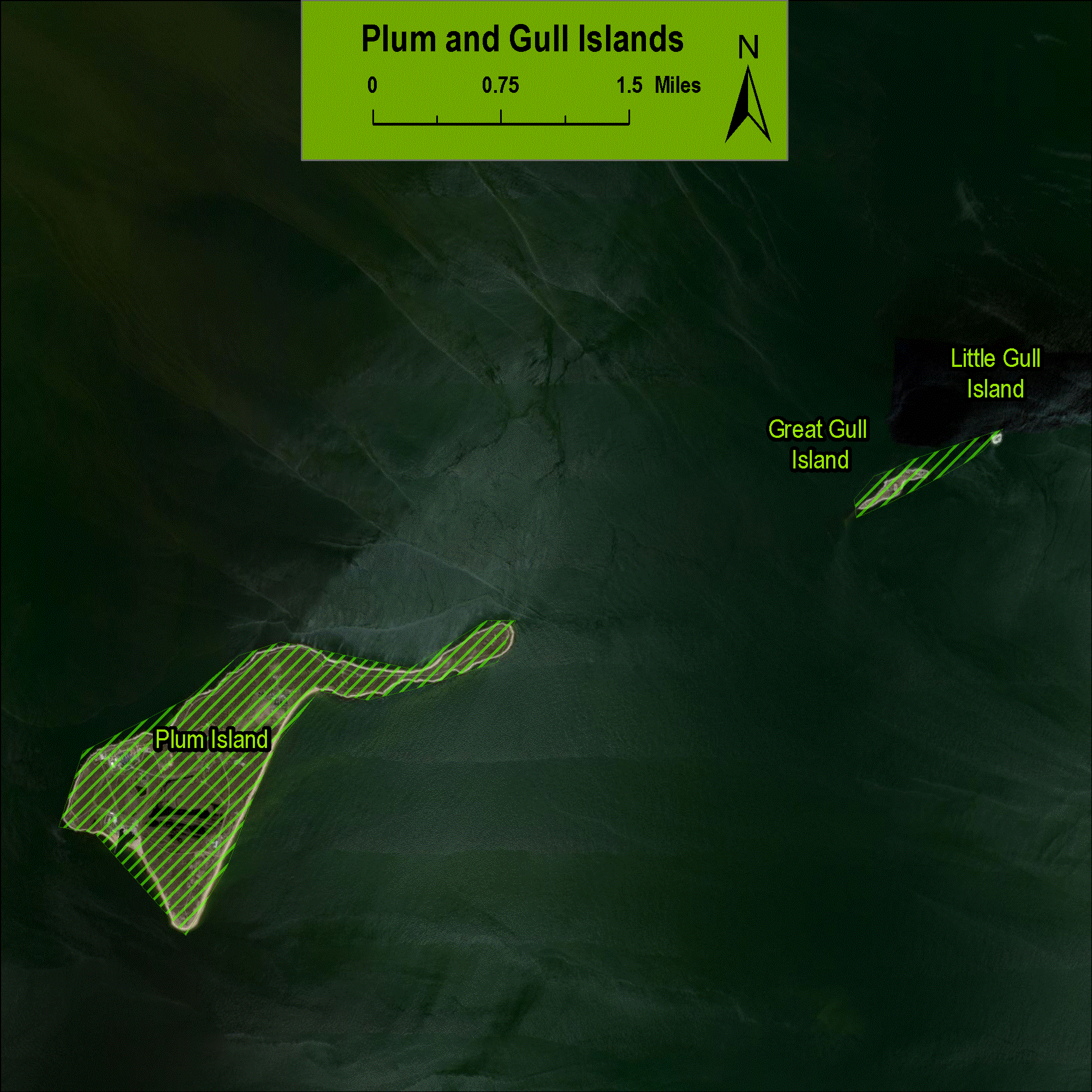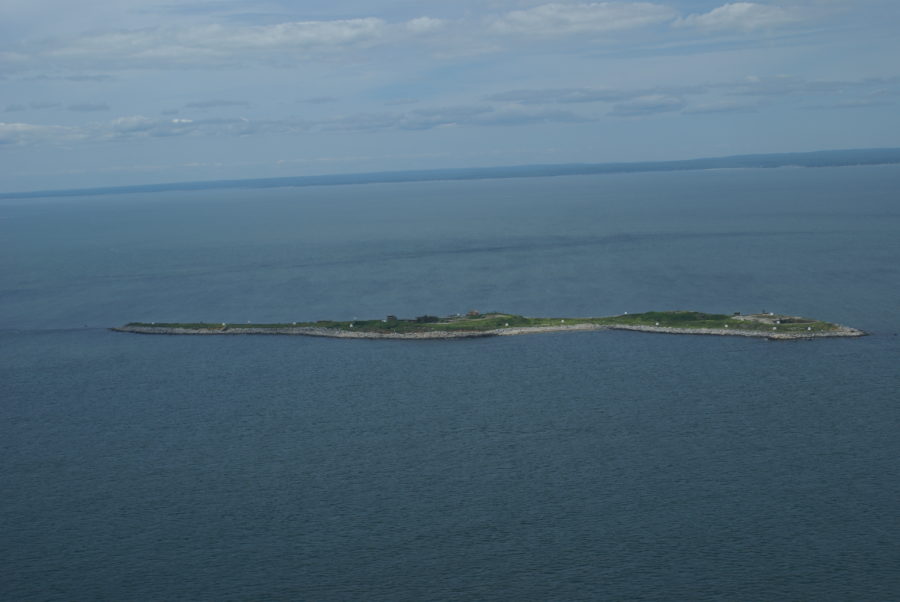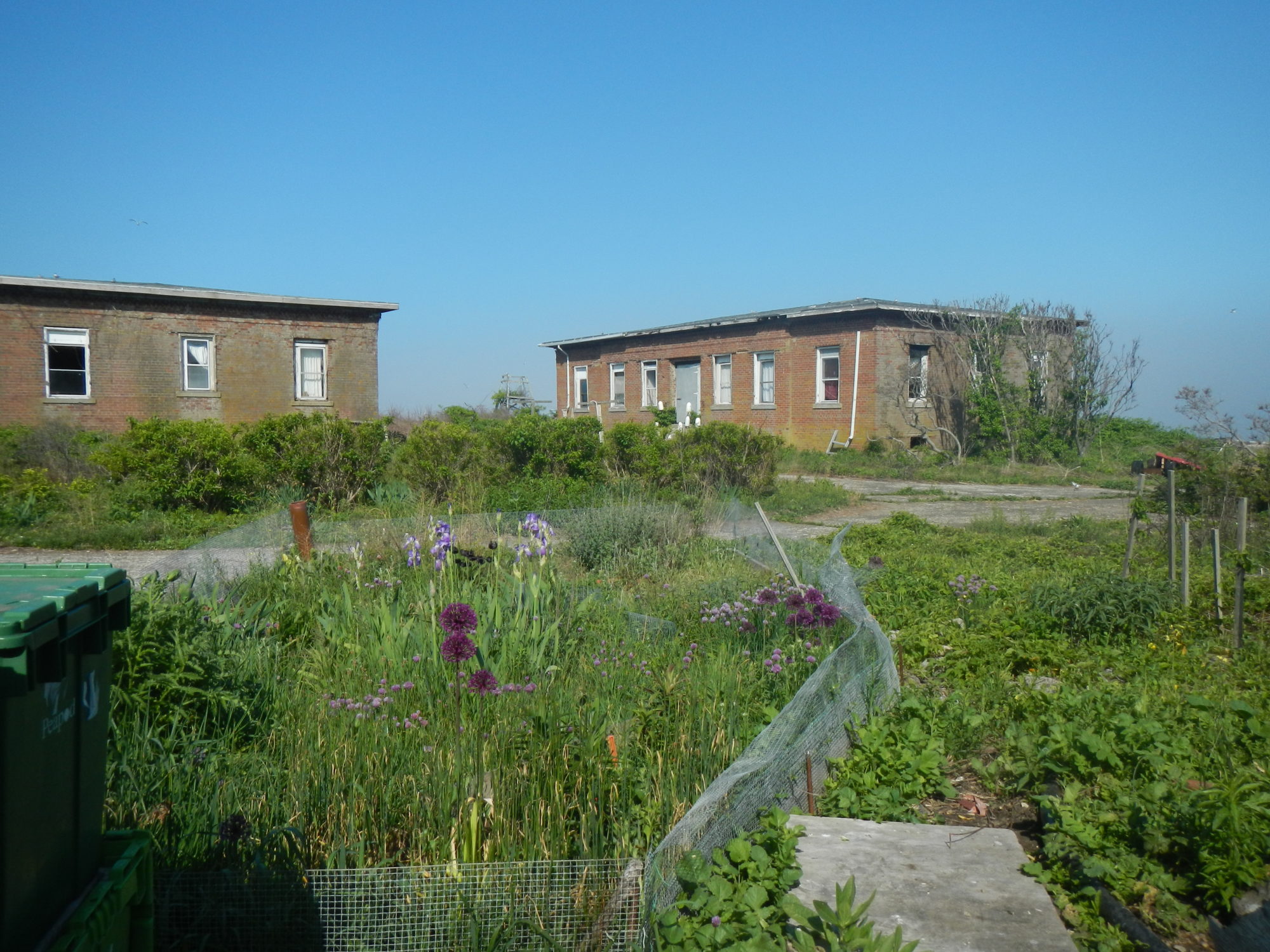Return to Main Stewardship Atlas Page
Plum and Gull Islands

Location
Southhold, NY
Anchor Site(s)
Plum Island, Great Gull Island, and Little Gull Island
About the Site
This Stewardship Area includes three islands in eastern Long Island Sound: Plum Island, Great Gull Island, and Little Gull Island. These islands serve as extremely important habitat areas for common tern, roseate tern, least tern, and piping plover populations. Great Gull Island is home to one of the largest breeding populations of roseate terns in the continent and is home to the world’s largest concentration of common terns, with about 9,500 pairs nesting on the island. Plum Island sits just off the tip of the north fork of Long Island and acts as a wildlife refuge where over 100 bird species have been documented. All of these areas are privately-owned and closed to the public.
Watch the Citizens Campaign for the Environment video of staff from various organizations, including LISS and Audubon, visiting Great Gull Island in August 2012 to see firsthand one of the most significant tern colonies in the western hemisphere.
- Only 17 acres in size, Great Gull Island is critically important to the survival of the common tern, which is considered a threatened species in New York, and the roseate tern, which has been listed as endangered both in New York and nationwide.
- This Stewardship Area has been designated as an Important Bird Area (IBA) by the National Audubon Society.
- Thanks to conservation and monitoring efforts, Great Gull Island is now home to the largest common tern colony in the world at over 9,500 pairs of common terns. It is also the site of the largest breeding concentration of the roseate tern in this hemisphere.
- Plum Island is also an important refuge for wildlife with more than 100 bird species documented, including piping plover and common and least terns. Osprey, roseate terns, bank swallows, juvenile bald eagles, and harbor and grey seals have been seen around the island.
- Sound Update: Islands Issue
This issue of Sound Update provides more information about Great Gull Island and Plum Island. - Important Bird Area Fact Sheet
This Audubon fact sheet describes why Orient Point and Plum Island region is an Audubon Important Bird Area. - Roseate Tern Fact Sheet
NYSDEC fact sheet provides information on this endangered bird, including noting that recent survey data indicates that 87 percent of the birds in New York State nest in only one colony at Great Gull Island. - Great Gull Island Project
The Great Gull Island Project has been researching tern populations on Great Gull Island for many years and is always in need of volunteers to help monitor the birds on the island. - Plum Island Biodiversity Inventory
The New York Natural Heritage Program describes historical and current known biodiversity, including natural communities and plant and animal species, of Plum Island.
- Orient Beach State Park, off Gardiners Bay, includes a rare maritime forest with red cedar, black-jack oak trees and prickly-pear cactus.
- Orient Point County Park, a 48-acre park at the tip of Southold Town, has a mile-long beach with a 1/2 mile hiking trail.
- Great Gull Island Project is always looking for volunteers to help monitor common and roseate tern populations.
- These islands are closed to the public. Little Gull Island is privately owned, Great Gull Island is owned by the Museum of Natural History, and Plum Island is home to the Plum Island Animal Disease Center (and is owned by the federal government).
























